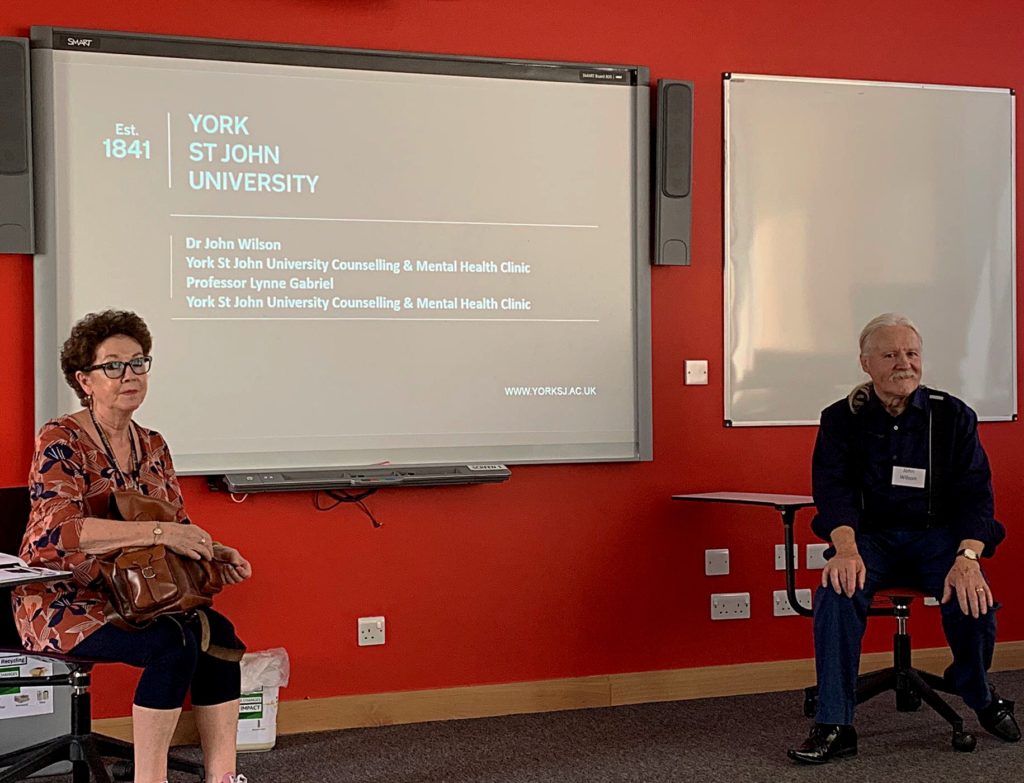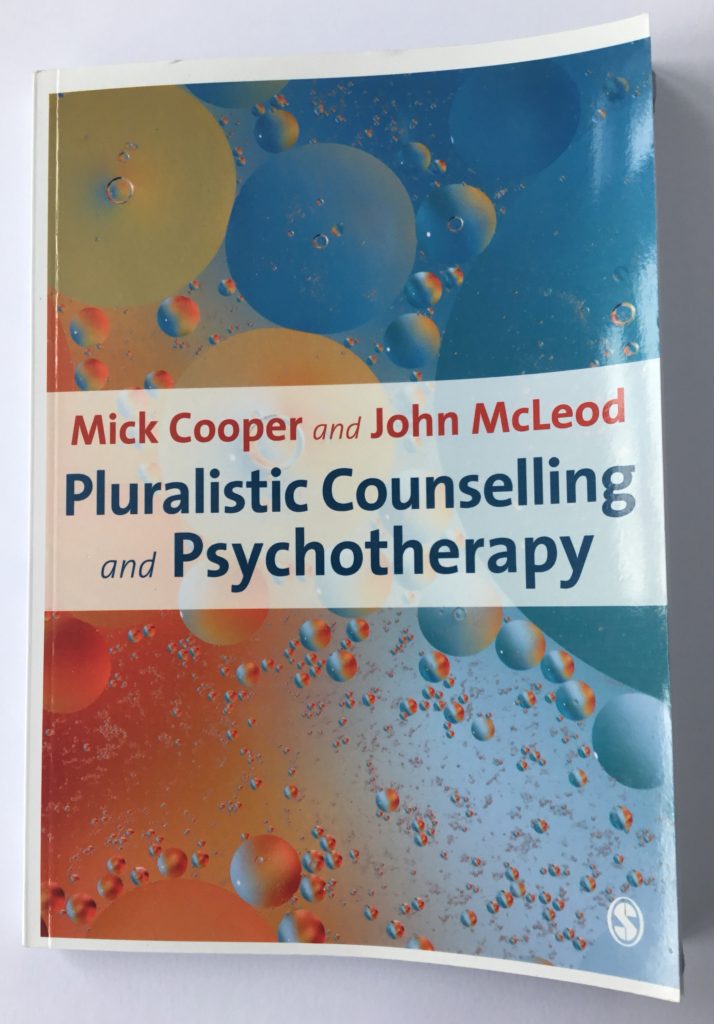
Picture: Letizia Perna-Forrest.
Towards the end of 2018 I was invited by my colleague, Professor Lynne Gabriel, to jointly facilitate a workshop at the Second International Conference on Pluralistic Counselling and Psychotherapy, entitled Developing a Pluralistic Approach to Bereavement Research.
Lynne was the lead supervisor for my PhD and knows my work well. She assured me that I worked pluralistically, and as I learned more about Pluralistic Counselling, I could see that she was right. We presented the workshop at the Roehampton Conference 6 April 2019 and repeated it at the Association of Bereavement Service Coordinators Conference at Leeds Trinity University on 24 July 2019.
I now accept that I am a Pluralistic Counsellor. Due to the nature of grief work, I am convinced that pluralistic counselling is ideally suited to bereavement counselling, and that most bereavement counsellors work pluralistically whether or not they are aware of it.
For an introduction to Pluralistic counselling, you cannot do better than Mick Cooper and John McLeod’s (2011) book, illustrated below (1). Taking as my lead the essential tenets of Pluralistic Counselling described in the book, I will describe how each tenet fits with grief work, the territory of the bereavement counsellor. Each subheading below is a Pluralistic Counselling tenet.

Client goals as the starting point
Asked at assessment what they would like to get from counselling, most bereaved clients tend to be fairly global in their reply. They just want to “feel better.” Apart from the fact that once the counselling starts, grief is confronted and the client often feels worse rather than better, this unfocussed goal is unhelpful. However, the wise and experienced bereavement counsellor has in their therapeutic tool chest, a range of models of grief. By listening carefully to the client on initial meeting, the model or models of grief which can be offered to the client will become apparent. For example, the client whose whole life, habits and reason for living have been shattered by the death of a partner may be helped with an understanding of Assumptive World Theory (2). Gradually, as the client learns to recognise what has changed and what remains the same, they can adapt to a world in which the deceased is missing. Some clients find themselves immersed in grief with no respite and can be helped to take time out from their grief with restorative, distracting activities, whilst those at the other end of the continuum distract themselves too well and spend no time immersed in loss and grief. An introduction to the Dual Process Model (3) can help both groups of clients learn to oscillate between loss and restoration. These and other models of grief are briefly described in the blue boxes at the foot of this article.
Identifying tasks and strategies collaboratively
Note that the emphasis above is not for the therapist to decide on a ‘treatment model’ for the client. Models of grief are offered and discussed as possibilities. A client of mine who I will call Morag, came to counselling following the death of her mother, after a long, deteriorating spell in hospital. Morag described an ambivalent relationship which had left her with feelings of anger, love and hate. Together we negotiated a focus of sessions which explored the reasons for her mother’s need to control, helped Morag establish a more understanding bond with her mother and gave her the space to revisit points in her mother’s illness and death, in order to make sense and assimilate new meaning.
Therapist – client collaboration
The work with Morag, which lasted for six sessions, alleviated the stress and confusion she had experienced for the six months before she accessed therapy. Work with ‘Tony’ took 35 sessions spread over more than a year. Tony had been bereaved of a brother in a road traffic crash when he was a child. Now 40 when he entered therapy, he had experienced an adult lifetime of depression and irritability. In the early stages of the work, Tony was unconvinced that delayed, unexpressed grief was the source of his difficulties. In the fifth session there was a cathartic release of pent up emotion which left Tony feeling tearful but euphoric. It left him convinced that he was in the right place for therapy. No particular model of grief was appropriate. I invited Tony to trust himself and trust the therapeutic process. In the ninth session, when not much had happened, Tony reflected on the helpfulness of ‘being patient.’ I found that Tony was best helped by my congruent attitude of curiosity about his unfolding process, which quickly became an infectious mutual curiosity.
“Cultivating a deep respect” for the client (Cooper and McLeod 2011, p.141)
After 20 years of practice in this field, I remain in awe of the resilience of so many clients, and of the hard work that the less resilient put into adapting to loss. Many clients have experienced bereavement in the most traumatic circumstances, Respect in this work comes easy.
Practising Flexibly (Cooper and McLeod 2011, p.30)
Flexible practice has to be at the heart of bereavement work. When the client arrives, any number of things may have happened during the week which need to be worked with there and then. New information about a cause of death may have come to light. An acquaintance or colleague may have said something inappropriate about the death. There may have been a further stressful event. The therapist also needs to be open to creative therapeutic interventions. An introduction to a new model of grief, an invitation to empty chair work, constructing a genogram with buttons, or an exploration of TA to make sense of a family are all unplanned interventions I have offered in the moment.
Directionality
Having negotiated goals and a collaborative focus differs from a ‘staying in the moment’, here and now approach typified by pure person-centred work. Experience has taught me that clients appreciate a sense of direction. Research has shown that the concept of ‘Grief work’ is in any case flawed (4). There is evidence that staying with grief work and having no sense of therapeutic direction is ineffective and may actually do harm (5). I long since stopped believing that a pure Rogerian approach to grief work was appropriate. However, the attitudes embedded in Pluralistic Counselling remain client-centred.
Monitoring helpfulness
Is what is happening in the therapeutic setting making a difference to the client? The effective bereavement counsellor encourages a dialogue of feedback with the client, based on trust, collaboration and the mutual curiosity described above. Honest feedback from the client, invited by the counsellor in regular reviews, helps to refocus and clarify the direction of the work.
Models of grief in a nutshell
Meaning-making theory
This is predicated on the idea that homo-sapiens is a meaning-making animal. Being unable to make sense of a situation, e.g. a bereavement, throws the individual into a state of cognitive dissonance, resulting in negative affect. The process of making sense and constructing new meaning, results in restorative healing. Much of the work on meaning making theory is attributed to Robert Neimeyer.
Relearning the world
This expression come from the work of Thomas Attig. It is closely linked with meaning-making theory, although the focus is on adapting to life following a bereavement or similarly life-changing event.
Assumptive World theory
This is Colin Murray Parkes’ theory of psychosocial change, predicated on the notion that we largely take our life for granted so long as little change is involved. Dramatic and traumatic sudden changes to our Assumptive World are major stressors. This includes bereavement, redundancy, relationship breakdown and radical surgery. As in Thomas Attig’s theory, counselling involves supporting the client in recognising and adapting to the changes.
Continuing Bonds theory
Dennis Klass and colleagues recognised that following the death of somebody close to us, we do not let go and move on with our lives. Rather, we form a new symbolic bond of closeness with them, which is comforting, and which we take into our future without the physical presence of the deceased. This is a highly individualised process. Counselling supports the bereaved person in the construction of these continuing bonds.
Dual process model
This is Stroebe and Schut’s recognition that grief typically involves immersion in the grief punctuated by spells of distraction and avoidance. The theory posits that periods of grief avoidance are helpful. The authors maintain that there is no conclusive evidence that clients need to do ‘grief work’, i.e. deliberate immersion in their grief. Healthy grief appears to involve an oscillation between periods of loss-orientation (grief) and periods of restoration-orientation (avoidance, distraction). The role of the counsellor is to encourage healthy oscillation between the two extremes, without one side or the other becoming dominant in the client’s everyday life.
A full discussion of these models of grief can be found in my book (6)
1 Cooper, M. & Macleod, 2001. J. Pluralistic Counselling and Psychotherapy London, Sage; 2011.
2 C. M. Psychosocial transitions: a field for study. Social Science and Medicine, 5, 1971; 101-115.
3 Stroebe MS, Schut H. The Dual Process Model of Coping with Bereavement: Rationale and desciption. Death Studies. 1999; 23:197-224.
4 Wortman CB, Silver RC. The Myths of Coping With Loss. Journal of Counselling and Clinical Psychology. 1989 1989;57(3):349-57.
5 Schut H, Stroebe MS, van den Bout J, Terheggen M. The Efficacy of Bereavement Interventions: Determining Who Benefits. In: Stroebe MS, Hansson RO, Stroebe W, Schut H, editors. Handbook of Bereavement Research: Consequences, Coping and Care. Washington DC: American Psychological Association; 2001. p. 705 -37.
6 Wilson J. Supporting People through Loss and Grief: An Introduction for Counsellors and other Caring Practitioners. London: Jessica Kingsley; 2014.
Further reading
Attig, T. (2011). How We Grieve: Relearning the World(Revised ed.). Oxford: Oxford University Press.